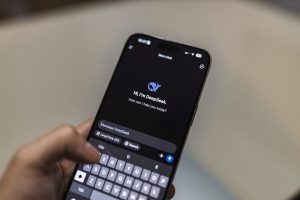So, you’re sitting there in 2025, maybe sipping on your morning nutrient paste or whatever, and you’re thinking, “Man, I really have an idea for an app.” And then the next thought hits you, like a brick made of dollar signs: “But how much is that gonna cost?” It’s a normal thing people wonder, especially when you’re just starting out and your pockets aren’t exactly overflowing with cash money. Developing a mobile app for free, that sounds pretty wild, doesn’t it? Like, is that even a real possibility?
Well, let me tell you, it’s more possible than it might seem, even with all the fancy tech floating around these days. You don’t always need a massive budget or a team of coding wizards working for you around the clock. Lots of people, they just want to get their app concept out there, see if it has some legs, you know? And if you’re willing to put in some time and energy, often more than you think, you can totally build something useful without shelling out a fortune. It might not be the flashiest thing right away, but it can work.
It is definitely something that needs a good bit of patience, and you will learn a lot on the way, which is a good thing for sure. Sometimes, just figuring out where to start is the hardest part for folks, because there’s just so much information floating around on the internet. You got to filter through all of it and pick the right bits for what you’re trying to do with your app. This whole process, it’s kind of like assembling a giant puzzle but without the picture on the box, sometimes.
You might be thinking, “What’s the catch here?” And the catch, if you want to call it that, is that “free” usually means you’re investing your own time and brainpower instead of money. That’s usually the tradeoff with these kinds of things. There are tools and systems available that don’t ask you for monthly subscriptions or big upfront payments, which is really what we’re going to talk about here.
Figuring Out What Your App Should Actually Do
Before you even touch a computer mouse or look at any code, it’s usually a pretty smart move to have a really good idea of what your app is supposed to be for. Don’t just say, “I want an app that does stuff.” Be specific, like, what problem does it solve? Who is it for, generally speaking? This initial thinking part, it is considered to be one of the most important steps.
Think about the main things your app needs to do. If it’s a list-making app, does it just make lists, or can you share them? Can you add pictures to your items? Sometimes just writing these things down on a piece of paper, even if it’s just a napkin, can help a whole bunch with getting your thoughts organized in a way that makes sense later. Don’t worry about the how just yet.
This part of the process, normally it helps to sketch out how your app might look, too. You don’t need to be an artist; stick figures and boxes are perfectly fine. This is just for you to get a visual sense of the flow. Where do people click first? What happens after that? This rough design, it is called wireframing, and there are free tools for it, which is good.
Some people, they get stuck here for ages, trying to make it perfect before they move on. Don’t do that. Just get enough down so you have a clear plan, something to go on. Remember, you’re building this for free, so “good enough” for version one is usually the goal. You can always change things later when you get more comfortable with it all.
Picking the Tools That Don’t Cost a Dime
Alright, so you’ve got your idea written down, maybe even drawn out a little. Now comes the exciting bit, which is picking out the actual bits of software that will help you put your app together. This is where the “free” aspect really starts to shine through, because there are a surprising number of totally usable options available if you know where to look.
One big area to consider is what people call “no-code” or “low-code” platforms. These are super popular because they let you drag and drop elements around, kind of like building with virtual LEGOs, instead of writing lines and lines of complicated code. There are plenty of these services that offer free tiers, which might have some limitations, but they’re great for starting.
Platforms like Adalo, Glide, or AppGyver often have free versions where you can build and even publish basic apps. They might put their branding on your app or limit the number of users, but for proving your concept, they are perfectly good. You can test your idea, get some feedback, and see if people actually want what you’ve made. This is really useful.
Then there’s the open-source stuff. This is a bit more technical, typically, but it means the code is freely available for anyone to use and change. Frameworks like React Native or Flutter, while they require some coding knowledge, they are free to download and use. This route gives you a lot more control, but it also means a steeper learning curve, it usually does.
You’ll also need a place to store any data your app uses, like user profiles or lists. Many database providers, like Google’s Firebase or Supabase, have very generous free tiers too. These services let you connect your app to a backend without paying anything unless your app starts getting a whole lot of traffic, which is a good problem to have.
Putting Your App Together, Bit by Bit
Once you’ve got your tools picked out, it’s time for the actual building. This is where your sketches come in really handy, because you’re basically bringing those drawings to life. It won’t be as fast as hiring a team of pros, you know, like the kind you’d find looking for Mobile app development Houston, but you’re getting it done on your own terms. It is the part where you see progress.
Start with the core features, the absolute must-haves. Don’t try to build everything at once. If your app is supposed to track daily habits, just get the “add habit” and “mark as done” parts working first. Forget about notifications or fancy statistics for now. Those can come later, much, much later, if the app even catches on with some people.
Using those no-code platforms, you’ll spend a lot of time arranging buttons, text fields, and images. It’s like doing a digital collage. With the open-source frameworks, you’ll be writing code, which is a different kind of challenge. There are tons of free tutorials online for both approaches, which can guide you through the initial steps. A lot of people find those really helpful.
Testing your app as you go is also super important. Don’t wait until it’s “finished” to see if things work. After you build one feature, try it out. Does it do what it’s supposed to? Does it break if you press the wrong button? Finding these little glitches early on saves you a huge headache in the long run. It just makes sense to do it that way.
Get friends or family to test it too, especially people who aren’t afraid to tell you what they really think. They might find things you totally missed, because you’ve been staring at it for so long. This feedback is really important for making your app better, even if sometimes it’s a bit tough to hear, you know, when someone points out a flaw in your baby.
Getting Your App Out There for People to Use
So, you’ve built your free app, and you’ve tested it. Now what? The next big step is getting it into the hands of actual users. This normally involves submitting it to app stores, which is often a process that can be a bit confusing if you’ve never done it before. But don’t worry, there are ways to manage this without spending a lot.
For Apple’s App Store, you typically have to pay a yearly developer fee, which isn’t free. However, for testing, you can often share your app directly with a limited number of testers using programs like TestFlight, which is free to use. For full public release, that fee is usually something you’ll need to figure out eventually, unless your app is just for a very small, private group.
Google Play Store has a one-time registration fee, which is much less than Apple’s annual one. After that, you can submit as many Android apps as you want without further costs. This makes Android a somewhat more accessible platform for truly free app development and distribution, especially if you’re really trying to keep costs down to zero. Many people like that option.
Another option for truly free distribution is just to share your app as a direct download, especially for Android apps. You can host the app file (APK) on your own website or a free file-sharing service. This means users have to manually install it, which isn’t as convenient as an app store, but it entirely sidesteps any app store fees, which is a pretty big plus.
Once your app is out there, even if it’s a bit rough around the edges, tell people about it! Share it on social media, in relevant online communities, or even just with your friends. Getting the word out is often the trickiest part, but it costs nothing but your time and a bit of bravery to put yourself out there. It really helps get users.
Keeping Your Free App Going (Without It Draining Your Wallet)
Okay, so your app is out there, maybe a few people are even using it! That’s awesome. But the journey doesn’t just stop there, does it? Apps, they need to be looked after, normally, to keep them working well and to fix any little problems that pop up. This ongoing work, it’s called maintenance, and it can also be done without spending money if you’re smart about it.
First off, keep an eye on user feedback. If people are reporting bugs, or saying something just isn’t working right, try to address those things. This means going back to your chosen development platform or your code and making those adjustments. It is important to remember that this process is kind of continuous, always making small changes.
Regularly check for updates to the tools or frameworks you used. If you built your app with a no-code platform, they’ll often release new features or fixes, and you just update your app within their system. If you used open-source code, you’ll need to stay updated on the latest versions of those libraries, because they can break things if you aren’t careful.
Sometimes, your app might get really popular, which is great! But it might also push the limits of those free tiers we talked about for things like databases or user limits. At that point, you might have to consider if you want to scale up and start paying a little, or find creative ways to manage your growth within the free constraints, which is another puzzle entirely.
Remember, this whole “free app” thing is usually a pretty good learning experience, above all else. You’re building skills, understanding how apps work, and maybe even finding a passion. Even if your app doesn’t become the next big thing, the knowledge you gain, it’s something that will stay with you, and it can open up other doors. It’s a good deal, really.
FAQs About Making an App for Nothing
Q1: Is it really possible to make an app completely free, without any hidden costs at all?
A: Generally speaking, yes, for a basic app, it is possible. Your main “cost” will be your time and effort. There might be small fees if you want to put your app on Apple’s App Store for public release, but Google Play has a one-time fee, and you can share Android apps directly too.
Q2: What kind of app can I make for free? Is it just simple stuff?
A: You can make quite a range of apps, from simple list-makers or calculators to more complex tools like basic social apps or content feeds. No-code tools are usually great for functional apps, but super fancy games or really complex, custom apps usually need more coding and might eventually cost money for specialized services.
Q3: How much time will it take me to build an app for free?
A: Oh, that varies a whole lot. A really simple app might take a few weekends or a couple of weeks, especially with no-code tools. If you’re learning to code for the first time with something like Flutter, it could easily be several months of consistent work to get something decent up and running. It definitely requires dedication, you know.
Q4: Do I need to know how to code to make an app for free?
A: Not necessarily! There are these great “no-code” platforms now where you can build apps by dragging and dropping things, which is super convenient for folks who don’t want to learn programming languages. If you want more freedom and power, though, learning some code will eventually open up more possibilities, it typically does.
Q5: What happens if my free app gets really popular? Will it start costing money then?
A: If your app really takes off, that’s a fantastic problem to have! Those free tiers on services like databases or user hosting often have limits. So, yes, if you hit those limits, you might need to upgrade to a paid plan to keep it running smoothly. But by then, hopefully, your app is doing well enough that you can figure out how to make some money from it, which is the idea.










